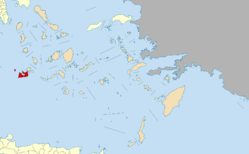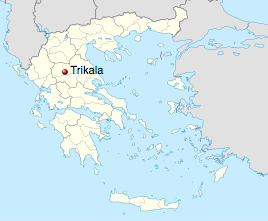*a Living dance, performed in the country of origin (or immigrant communities) as part of a social event like a wedding where others can participate (not for an audience) by people who learned the dance informally (from friends and relatives by observation and imitation, not in a classroom situation).
Tsifteteli/τσιφτετέλι, Çiftetelli music
Çiftetelli (Turkish) Tsifteteli (Greek), is a Turkish musicians’ expression meaning “a pair of strings”; it originally referred to a technique of playing the violin in which the fiddler put the second string in the same groove on the bridge as the first string and tuned them either to the same octave or an octave apart. A tsifteteli melody was played in a long drawn out and wavering style, and hence any instrument mimicking this style was said to be playing tsifteteli.
Though the playing technique is rarely used today, the style of music and dance it accompanied are still called tsifteteli or çiftetelli. The rhythm in Greece is considered a 4/4, with a stress on the first and (surprisingly) on the fourth count, however the more common version of stressing the first and third count is also quite familiar to the Greeks. It can be simple or filled in with many variations, syncopations etc…
With the passing of time, tsifteteli music became less mournful, now it’s almost happy.
Tsifteteli/τσιφτετέλι dance
Here’s a quote by Greek dance authority Ted Petrides, from his ©1976 book Greek Dances and How to Do Them, “This dance has a long and diverse history….But all these so-called belly-dances have their origins in the fertility rites of the primitive peoples of the eastern Aegean. Of the various forms of this dance which existed at one time in the ancient world only two basic types have survived: the folk dance and the art dance. The art dance required the services of a professional dancer as it does today, whereas the folk dance was and is danced by the people themselves. Until recently there was a third type which was didactic and was performed before newly engaged or married couples to instruct them in the attitudes and movements appropriate to the art and act of love.
With the gradual development of civilization in the Near East a form of this dance which is no longer extant evolved into a temple dance, the Lydians and Ionians being its leading exponents, Dancing girls and even dancing men dedicated to the worship of some goddess were often part of the temple staff. Religious prostitution was also instituted as an adjunct to the dancing, as for example in the Temple of Aphrodite at Corinth.
[Although there are written and visual references to dances resembling tsifteteli from ancient times, they do not contain enough detail to prove those dances are the same as today’s tsifteteli. DB]
This was the situation when Christianity came into the scene. The new religion condemned all such dances, from those performed by the courtesans at the symposia as being immoral, to those of the temples as being pagan. Even the folk dance didn’t escape unscathed; in some religious circles all dancing was denounced. All this has left its mark on the Greek people who, when questioned as to the origins of this dance, are quick to assert that is is not a Greek dance but a Turkish one.…
….The slow tsifteteli folk dance, which is not as popular in central Greece and the Peloponnesos and adjacent islands as it is among the Greeks of the eastern Aegean coast and islands, for it requires greater and more specific undulation of the arms and body than the fast dance. The visual effect is beautiful and powerfully erotic, suggesting at the same time intense concentration, physical grace, and sexual abandon. Generally speaking, the Anatolian Greeks admire a woman who is openly supple and demonstrative in her movements whereas western Greeks feel it is a disgrace for a woman to move in such a manner. This difference in viewpoint is primarily of geographic origin, in that the Anatolian Greeks are closer to that part of the world where one of the established social concepts of dance is that the woman perform for the man with the object of beguiling and pleasing him with her movements. Influenced by the proximity of this sentiment, the Anatolian Greeks have not been as strongly affected as the western Greeks by the relatively austere attitudes of Christianity. And indeed this austerity was reinforced in western Greece by the four centuries of Ottoman occupation.”
This last sentence may seem counter-intuitive – how could occupation by an Islamic power that embraced tsifieteli cause the occupied to reject their native tsifteteli even further? It must be remembered that the Ottomans largely left the administration of the occupied Greeks to the Greek Orthodox church, which was already anti-dance. The absence of other more liberal, secular, native Greek rulers made the Church’s power stronger. Western Greece also had fewer Turkish settler-neighbours to act as counter-influences. Nowadays sensual tsifteteli appears to be more generally acceptable.
Everyone has an opinion about whether tsifteteli is or is not belly dance. There is certainly a tsifteteli continuum, ranging from hip undulations to exaggerated isolations and moves requiring athlete-level training to purely erotic simulations. The former are what I consider ‘folk’ tsifteteli. Here’s a few examples. What is clear is that both men and/or women do Çiftetelli/Tsifteteli.




Çiftetelli
The çiftetelli appears in many variations in the folk music of Western and Central Turkey. The different compositions based on this popular rhythm each have their own name. In Turkey çiftetelli has been relegated to wedding music, where Roma and Greeks have adopted the upbeat folk rhythms into oriental dancing.
Romani often served as purveyors of music to Turks, and their women (and boys) were recruited (others being Greeks, Armenians, Jews, and Albanians) to become belly dancers. The boy dancers were called köçek, from which we get the word čoček, the name known throughout the Balkans for a very similar dance.
Drummers tend to have fun filling in the end of the rhythm in various, sometimes unexpected, ways. It is sometimes used to accompany a taaqasiim (melodic improvisation). Egyptians tend to play a simpler version of çiftetelli than you might find in Turkey and call it “waaHida taaqasiim” or maybe “waaHida kabiir”.




